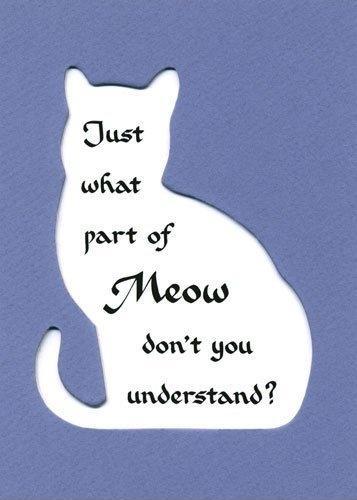Just what part of meow don't you understand

Just what part of meow don't you understand
Cats are known for their unique way of communicating with humans and other animals. One of the most iconic sounds that cats make is the "meow". This simple yet versatile vocalization can convey a wide range of emotions and needs, from hunger and affection to annoyance and distress.When a cat meows at its owner, it is often trying to communicate something specific. However, many cat owners may find themselves puzzled by the meaning behind their feline friend's meows. This is where the phrase "Just what part of meow don't you understand" comes into play.
Cats are masters of non-verbal communication, using body language, facial expressions, and vocalizations to express themselves. While dogs may rely more on barking and whining to communicate, cats use meowing as their primary form of vocal communication. Each cat has its own unique meow, with variations in pitch, tone, and duration that can convey different meanings.
For example, a short, high-pitched meow may indicate excitement or anticipation, while a long, low-pitched meow could signal frustration or displeasure. A series of rapid, repetitive meows may be a sign of urgency or distress, such as when a cat is stuck in a room or hungry and demanding food.
Despite the complexity of cat vocalizations, some owners may struggle to understand what their cat is trying to communicate. This can lead to frustration on both sides, with the cat feeling misunderstood and the owner feeling helpless.












 Friendship Quotes
Friendship Quotes Love Quotes
Love Quotes Life Quotes
Life Quotes Funny Quotes
Funny Quotes Motivational Quotes
Motivational Quotes Inspirational Quotes
Inspirational Quotes